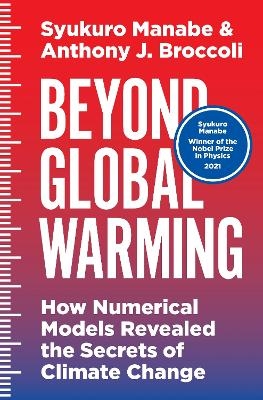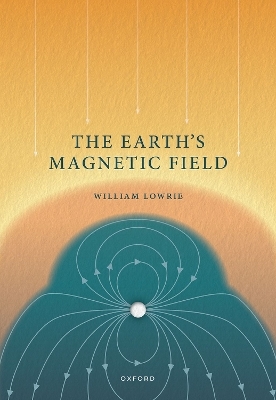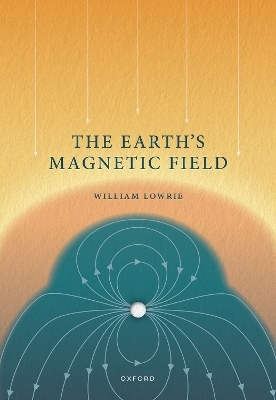
Atmosphere-Ocean Interaction
Oxford University Press Inc (Verlag)
978-0-19-506618-0 (ISBN)
The second edition of this book presents an up-to-date account of the transfer of energy, matter, and momentum between the atmosphere and the ocean. The expository style of the book will be welcomed by students and professionals alike, within the fields of meteorology, oceanography, and physics. Topics covered include surface wind waves, the planetary boundary layer, and radiation.
Preface ; 1. Basic Concepts ; 1.1. Notation ; 1.2. Conservation equations ; 1.2.1. Conservation of matter ; 1.2.2. Conservation of momentum ; 1.2.3. Conservation of energy ; 1.3. Turbulence and turbulent transport ; 1.4. Statistical description of fluctuating quantities ; 1.4.1. Correlation functions and spectra ; 1.4.2. Isotropic turbulence ; 1.5. Scaling techniques and similarity relations ; 2. The State of Matter Near the Interface ; 2.1. Sea water ; 2.1.1. The equation of state ; 2.1.2. Latent heat and saturation vapour pressure of pure water ; 2.1.3. Colligative properties ; 2.1.4. Atmospheric gases in solution ; 2.1.5. Molecular transport coefficients ; 2.2 Moist air ; 2.2.1. The equation of state ; 2.2.2. Molecular transport coefficients ; 2.2.3. Isobaric mixing and fog formation ; 2.2.4. Adiabatic and pseudo-adiabatic changes of state ; 2.3. The liquid-gas interface ; 2.3.1. Laminar sublayers ; 2.3.2. Surface tension ; 2.3.3. Contamination ; 2.4. Bubbles and spray ; 2.4.1. Generation of bubbles and spray droplets ; 2.4.2. Equilibrium pressure in air bubbles and spray droplets ; 2.4.3. Terminal velocities of gas bubbles and spray droplets ; 2.4.4. The size and flux spectra of air bubbles in bubble clouds ; 2.4.5. Sea surface bubble spectra and whitecap coverage as a function of wind speed ; 2.4.6. The size and flux spectra of spray droplets ; 2.4.7. Environmental effects of bubbles and spray ; 2.5 Sea ice ; 2.5.1. Formation and growth ; 2.5.2. Physical properties of sea ice ; 3. Radiation ; 3.1. Definitions ; 3.2. Solar radiation ; 3.2.1. The net short-wave irradiance at the sea surface ; 3.2.2. Reflection at the sea surface ; 3.2.3. Absorption of solar radiation in the ocean ; 3.3. Terrestrial radiation ; 3.3.1. Long-wave emission from the sea surface ; 3.3.2. Radiative transfer in the lower atmosphere ; 3.4. Empirical formulas for estimating the surface radiation budget ; 3.4.1. Short-wave irradiance ; 3.4.2. Short-wave exitance ; 3.4.3. Long-wave irradiance and exitance ; 4. Surface Wind Waves ; 4.1. Basic dynamics of harmonic waves in fluids ; 4.2. Small amplitude waves at the air-sea interface ; 4.3. Second-order quantities and approximations ; 4.4. Sources and sinks of surface wave energy ; 4.4.1. Transfer of energy between waves ; 4.4.2. Dissipation and breaking ; 4.4.3. The generation of waves by the wind ; 4.5. The evolution and parameterization of surface wave spectra ; 5. Turbulent Transfer Near the Interface ; 5.1. The structure of the interface and adjacent layers ; 5.1.1. The profiles in the molecular sublayers ; 5.1.2. The matching of surface layers to molecular sublayers ; 5.1.3. Transition from smooth to rough flow ; 5.2. The effect of stratification ; 5.3. Dynamic interactions between wind and sea surface ; 5.3.1. Surface drift ; 5.3.2. Wind-wave interactions ; 5.4. Transport of trace gases across the interface ; 5.4.1. Application of the surface renewal model ; 5.4.2. The stagnant water film model ; 5.4.3. Experimental methods and results ; 5.5. The sea surface temperature (SST) and the energy budget ; 5.6. Methods to observe the fluxes in the atmospheric surface layer ; 5.6.1. The eddy correlation method ; 5.6.2. The eddy accumulation method and the conditional sampling method ; 5.6.3. The gradient method ; 5.6.4. The dissipation and inertial dissipation methods ; 5.6.5. Fluxes obtained with remote sensing techniques ; 5.6.6. The ageostrophic transport or momentum budget method ; 5.6.7. Bulk parameterizations ; 6. The Planetary Boundary Layer ; 6.1. The Ekman boundary layer ; 6.1.1. The stationary laminar Ekman layer ; 6.1.2. Transient Ekman layers and Ekman transports ; 6.1.3. The depth of the turbulent Ekman layer; surface-waves effects ; 6.2. Coherent structures in the planetary boundary layer ; 6.2.1. Observations of oceanic longitudinal rolls ; 6.2.2. Observations of atmospheric longitudinal rolls ; 6.2.3. Laboratory experiments ; 6.2.4. Numerical simulations ; 6.2.5. Energetics of longitudinal rolls ; 6.2.6. Physical concepts and theories ; 6.3. Parametric representation of PBL fluxes and profiles ; 6.3.1. Diffusive models ; 6.3.2. The transilient scheme ; 6.3.3. Parametric representation of PBL profiles ; 6.4. Mixed-layer models ; 6.4.1. The oceanic mixed layer ; 6.4.2. The cloud-free atmospheric mixed layer ; 6.4.3. The cloud-topped convective marine boundary layer ; 6.5. Discussion and evaluation ; 7. Atmospherically-forced Perturbations in the Oceans ; 7.1. Perturbations of a shallow, homogeneous ocean ; 7.1.1. The different types of atmospheric forcing ; 7.1.2. The forced shallow water equation ; 7.1.3. Perturbations of different extent and duration ; 7.2. The two-layer ocean model ; 7.2.1. The governing equations ; 7.2.2. Gravity waves at an internal density discontinuity ; 7.2.3. The rigid-lid approximation ; 7.2.4. Ekman pumping ; 7.3. Internal inertio-gravity waves ; 7.3.1. Internal waves in a continuously-stratified ocean ; 7.3.2. Long-waves; normal modes ; 7.3.3. Atmospheric forcing of inertio-gravity waves ; 7.4. The response of the open ocean to moving cyclonic storms ; 7.4.1. Observations ; 7.4.2. The simulated short-term oceanic response to moving storms ; 7.4.3. The long-term oceanic response to moving storms ; 7.5. The effect of lateral boundaries on wind-forced perturbations ; 7.5.1. Wind-forced upwelling and downwelling along a straight coast ; 7.5.2. Coastal Kelvin waves ; 7.5.3. Shelf waves ; 7.5.4. Storm surges ; 7.6. Rossby or planetary waves ; 7.6.1. Free planetary waves ; 7.6.2. Forced plantary waves ; 7.7. Equatorial currents and perturbations ; 7.7.1. Balanced equatorial currents ; 7.7.2. Equatorial perturbations ; 8. Large Scale Forcing by Sea Surface Buoyancy Fluxes ; 8.1. The predominant direction and variability of air-sea interactions ; 8.2. Deep convection ; 8.2.1. The general character and organization of deep convection ; 8.2.2. Laboratory experiments and dimensional analysis ; 8.2.3. Deep convection and bottom-water formation in the oceans ; 8.3. The tropical atmosphere ; 8.3.1. Deep convection in the presence of clouds and precipitation ; 8.3.2. The Inter-Tropical Convergence Zone (ITCZ) and the Hadley circulation ; 8.3.3. Hurricanes ; 8.4. Some low-frequency ocean-atmosphere feedback processes ; 8.4.1. El Nino and the Southern Oscillation (ENSO) ; 8.4.2. The Somali current and the Indian monsoon ; 8.4.3. Interactions between the hydrological cycle and the thermo-haline circulation
| Erscheint lt. Verlag | 12.1.1995 |
|---|---|
| Reihe/Serie | Oxford Monographs on Geology and Geophysics ; 27 |
| Zusatzinfo | halftones, line figures, tables |
| Verlagsort | New York |
| Sprache | englisch |
| Maße | 160 x 240 mm |
| Gewicht | 819 g |
| Themenwelt | Naturwissenschaften ► Geowissenschaften ► Geophysik |
| Naturwissenschaften ► Geowissenschaften ► Hydrologie / Ozeanografie | |
| Naturwissenschaften ► Geowissenschaften ► Meteorologie / Klimatologie | |
| ISBN-10 | 0-19-506618-9 / 0195066189 |
| ISBN-13 | 978-0-19-506618-0 / 9780195066180 |
| Zustand | Neuware |
| Haben Sie eine Frage zum Produkt? |
aus dem Bereich


